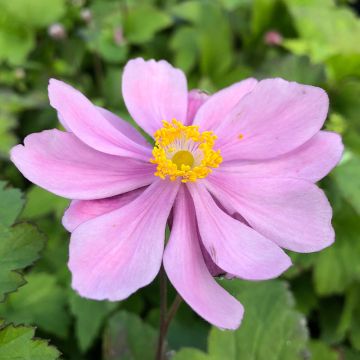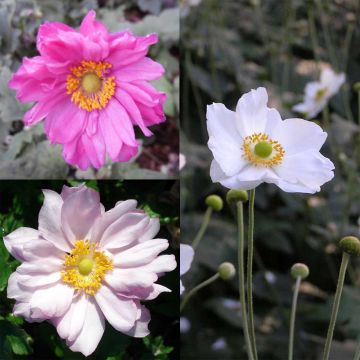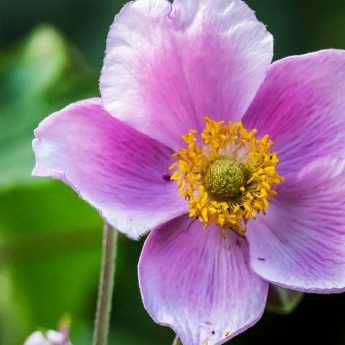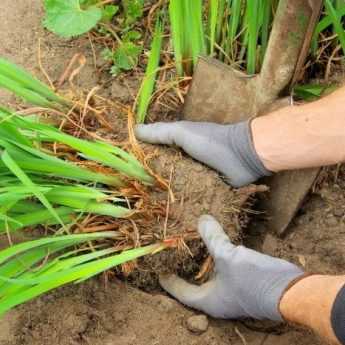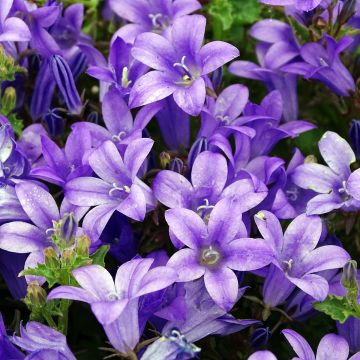

Anemone hupehensis var. japonica Pretty Lady Maria
Anemone hupehensis var. japonica Pretty Lady Maria
Anemone hupehensis var. japonica Pretty Lady Maria
Japanese anemone, Thimbleweed, Windflower
Unfortunately, it did not regrow. I was refunded by customer service, so that’s fine, but what a shame!
Emeline, 27/04/2024
This item cannot be shipped to the selected country
Delivery charge from €6.90
More information
Delivery charge from €6.90
More information
Schedule delivery date,
and select date in basket
This plant carries a 12 months recovery warranty
More information
We guarantee the quality of our plants for a full growing cycle, and will replace at our expense any plant that fails to recover under normal climatic and planting conditions.
From €7.90 for pickup delivery and €6.90 for home delivery
Express home delivery from €8.90.
Does this plant fit my garden?
Set up your Plantfit profile →
Description
Anemone hupehensis var. japonica Pretty Lady Maria is part of a series of hybrids called the Pretty Ladies, selected for their particularly compact habit and abundant flowering. The white flowers of the charming Maria variety bloom abundantly from August to September, on a knee-high, bushy plant. The charm of this lovely perennial becomes evident as the season comes to an end and other flowers begin to fade. Plant it in flower beds alongside autumn daisies and hardy chrysanthemums. It will also work well in a pot on a patio or balcony too.
Like her sisters 'Diana', 'Emily' and 'Susan', Pretty Lady Maria is a hybrid Japanese anemone obtained in Japan by Mr. Yoshihiro Kanazawa. They have recently been introduced to the market in England. All display compact growth, an extraordinary abundance of flowers, and denser foliage than other varieties.
Pretty Lady Maria is a perennial plant of the Ranunculaceae family. It may be the result of cross-breeding between Anemone vitifolia, native to the Himalayas, and Anemone hupehensis, native to central and western China. This dwarf variety will usually reach 40 to 50cm (16 to 20in) in height (up to 60cm (24in) in shade), depending on the richness of the soil it grows in, with a diameter of 40cm (16in). Like other Japanese anemones, it is a perennial plant with fibrous 'tubers' that form large vigorous and rounded clumps. The foliage is deciduous to semi-evergreen depending on the climate. It is finely divided, dark green, strongly veined on the underside, and more or less pubescent. The abundant and prolonged flowering takes place from August to September to October-November. The 5cm (2in) diameter flowers are solitary and simple. They are borne on strong, slender and upright stems. They first appear as delightful creamy-yellow oval buds, then open into shallow cups, composed of wide rounded petals of a sparkling white. The green flower centre turns yellow. It is adorned with a beautiful crown of golden yellow stamens. Japanese anemones are not demanding. They can live for decades in the same spot without requiring much maintenance.
Japanese anemone is one of the most beautiful autumn flowers. Light and graceful, it sways gently in the wind. It decorates the garden or large pots on a patio from late summer to the first frost. Perfect in the back of a flower bed, it blends its elegant flowering with the grace of autumn asters (cordifolius, laevis, turbinellus) and the nostalgic charm of perennial chrysanthemums. Pretty Lady Maria is perfect for bordering a flower bed, in front of a hedge of hydrangeas and spindles. The finely divided foliage adds a beautiful dark green note to flower bouquets.
Anemone hupehensis var. japonica Pretty Lady Maria in pictures


Flowering
Foliage
Plant habit
Botanical data
Anemone
hupehensis var. japonica
Pretty Lady Maria
Ranunculaceae
Japanese anemone, Thimbleweed, Windflower
Cultivar or hybrid
Other Japanese Anemones
View all →Planting and care
Japanese anemones grow in gentle sunlight or partial shade, in moist, humus-rich, loose soil with minimal lime. They slowly spread with the help of their underground rootstocks. Plant them outdoors in spring or autumn. Choose a location protected from strong winds that could flatten the clumps. Space them 30cm (12in) apart, in cool to moist but well-drained soil. Once the young plants are established, they should not be disturbed. The flowering becomes increasingly abundant as the years go by. In late autumn, cut the flower stems to ground level. Every 2 or 3 years, apply well-rotted compost to their base to enrich the soil, as they are quite demanding.
Planting period
Intended location
Care
Planting & care advice
Summer flowering perennials
Haven't found what you were looking for?
Hardiness is the lowest winter temperature a plant can endure without suffering serious damage or even dying. However, hardiness is affected by location (a sheltered area, such as a patio), protection (winter cover) and soil type (hardiness is improved by well-drained soil).

Photo Sharing Terms & Conditions
In order to encourage gardeners to interact and share their experiences, Promesse de fleurs offers various media enabling content to be uploaded onto its Site - in particular via the ‘Photo sharing’ module.
The User agrees to refrain from:
- Posting any content that is illegal, prejudicial, insulting, racist, inciteful to hatred, revisionist, contrary to public decency, that infringes on privacy or on the privacy rights of third parties, in particular the publicity rights of persons and goods, intellectual property rights, or the right to privacy.
- Submitting content on behalf of a third party;
- Impersonate the identity of a third party and/or publish any personal information about a third party;
In general, the User undertakes to refrain from any unethical behaviour.
All Content (in particular text, comments, files, images, photos, videos, creative works, etc.), which may be subject to property or intellectual property rights, image or other private rights, shall remain the property of the User, subject to the limited rights granted by the terms of the licence granted by Promesse de fleurs as stated below. Users are at liberty to publish or not to publish such Content on the Site, notably via the ‘Photo Sharing’ facility, and accept that this Content shall be made public and freely accessible, notably on the Internet.
Users further acknowledge, undertake to have ,and guarantee that they hold all necessary rights and permissions to publish such material on the Site, in particular with regard to the legislation in force pertaining to any privacy, property, intellectual property, image, or contractual rights, or rights of any other nature. By publishing such Content on the Site, Users acknowledge accepting full liability as publishers of the Content within the meaning of the law, and grant Promesse de fleurs, free of charge, an inclusive, worldwide licence for the said Content for the entire duration of its publication, including all reproduction, representation, up/downloading, displaying, performing, transmission, and storage rights.
Users also grant permission for their name to be linked to the Content and accept that this link may not always be made available.
By engaging in posting material, Users consent to their Content becoming automatically accessible on the Internet, in particular on other sites and/or blogs and/or web pages of the Promesse de fleurs site, including in particular social pages and the Promesse de fleurs catalogue.
Users may secure the removal of entrusted content free of charge by issuing a simple request via our contact form.




































